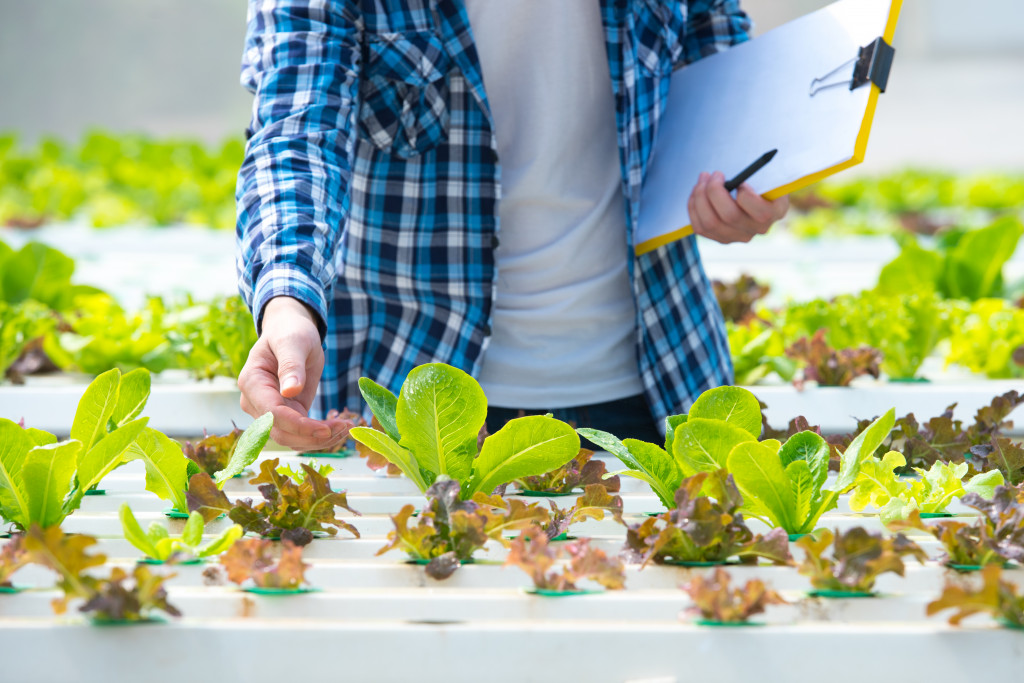Even before the pandemic, many urban areas in the United States already lacked access to fresh vegetables, fruits, and herbs. Supermarkets are far from low-income communities. Vegetables and fruits available in supermarkets have been trucked in from far-off farms and were many days from harvest. In a week, they lose more than half of their nutrients. They are also no longer as tasty. Fast food and processed food are often cheaper and more attractive. Packaged food is readily accessible in corner stores.
This leads to poor health, especially among low-income communities, contributing to obesity and the development of chronic diseases like hypertension, heart disease, and diabetes. US News states that these areas have been called food deserts. During the pandemic, food insecurity in urban areas has worsened.
City Farming

The urban agriculture movement also began before the pandemic. The pandemic, however, increased its momentum. More people realized the benefits of growing their own food and that this is possible even in cities. They have also seen the urgency of eating healthy to boost the body’s immune system against Covid-19.
In New York, for instance, low-income communities are now growing vegetables in unused lands such as neglected parkways and empty lots. In the Bronx, community farm hubs produce collard greens, kale, and garlic. The New York Botanical Garden’s Bronx Green-Up program supports these efforts by providing seedlings and resources, helping solve problems, and assisting in harvest distribution. Produce that the community growers cannot consume are sold at a weekly farmers market.
In any city, edible landscaping can replace ornamental landscaping in private and government properties, including schools and parks. Rooftops can be turned into edible gardens, as well, maximizing the use of space. Community members who tend to these gardens can be paid with fresh produce. Other community members can purchase the produce at farm prices.
Even the smallest home can plant potted vegetables beside windows. People can also put potted edible plants in balconies or even fire escapes. The harvest can at least supplement meals.
No-Soil Farming
In some areas, the soil is not conducive to farming. Hydroponics is the solution to this problem. Plants are grown in water supplemented with phosphorus, nitrogen, and calcium. Even though it is water-based, the system uses up to 10 times less water than traditional watering methods for field crops. This is because the water in the hydroponic system is recycled in a circular method.
Hydroponics is also a solution for areas with extreme weather conditions. The hydroponic system can be set up indoors with full-spectrum LED lighting replacing sunlight. Solar panels can be used to power the LED lighting system year-round. Hydroponics is also space-saving. The modular vertical farming method can expand the growing area of space by almost three times.
The hydroponic method is scalable to large production. On the other hand, there are also small systems that can be used in homes. Some of them are even decorative, as well. Edible plants can replace ornamental indoor plants.
Government Support
The Office of Urban Agriculture and Innovative Production of the U.S. Department of Agriculture (USDA) recognizes the importance of city farming for food access. It is providing up to four million dollars to be distributed as grants for community planning and implementation projects related to urban farming.
Previously approved planning projects included the Urban Agriculture Master Plan of New Haven, Connecticut, and the Center for Land-Based Learning of California. Previously approved implementation projects included Interfaith Power and Light of Arkansas and The Greenleaf Foundation of Atlanta.
Agricultural Literacy
Just a few generations ago, most Americans knew how to grow edible plants in their backyards, if not in farms. It was a basic life skill passed down to children who are trained as they help their parents with gardening tasks. Now, it is a skill that not many Americans have.
To ensure the sustainability of the urban agriculture movement, it is necessary to teach children agricultural literacy early on. It must be part of the curriculum of the educational system. Schools can give students hands-on experience in on-campus edible gardens. The fresh produce can be used in preparing the students’ school meals, making these healthier and more delicious. This will also develop in children a taste for healthy food.
In homes, having edible gardens will further reinforce the children’s connection with growing their own food. This must become a natural part of each one’s lifestyle. Being raised this way will make a person prefer home-grown fresh produce to any processed food. There is nothing more delectable than a salad that has just been snipped off the garden. This will also solve the nation’s problem with obesity as people will naturally choose to eat healthy meals.